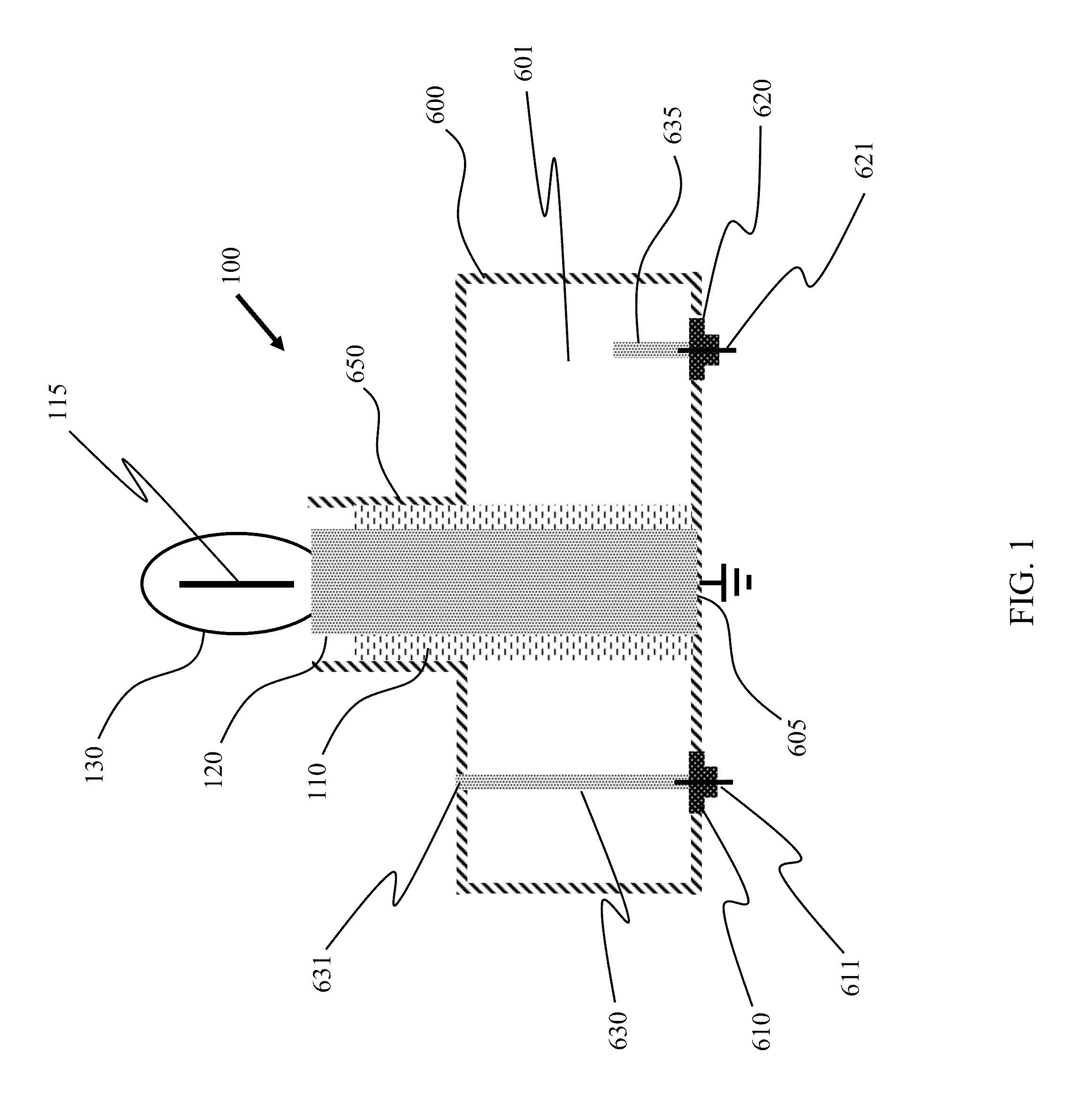Method and system for adjusting the frequency of a resonator assembly for a plasma lamp
a resonator assembly and plasma lamp technology, applied in the field of lighting techniques, can solve the problems of electrode-less lamps still having many limitations, consuming too much energy of edison bulbs, and generally inefficient, so as to reduce the tolerance of the dimensions of resonators, improve manufacturing yield, and simplify manufacturing
- Summary
- Abstract
- Description
- Claims
- Application Information
AI Technical Summary
Benefits of technology
Problems solved by technology
Method used
Image
Examples
Embodiment Construction
[0029]According to the present invention, techniques for lighting are provided. In particular, the present invention provides a method and device using a plasma lighting device having one of a plurality of base configurations, e.g., compact air resonator, air resonator, air resonator including a dielectric insert or sleeve. More particularly, the present invention provides a method and resulting system for adjusting a frequency for a resonator assembly for a plasma lamp, which can be used for a variety of applications. Merely by way of example, such plasma lamps can be applied to applications such as stadiums, security, parking lots, military and defense, streets, large and small buildings, vehicle headlamps, aircraft landing, bridges, warehouses, uv water treatment, agriculture, architectural lighting, stage lighting, medical illumination, microscopes, projectors and displays, any combination of these, and the like.
[0030]The following description is presented to enable one of ordin...
PUM
 Login to View More
Login to View More Abstract
Description
Claims
Application Information
 Login to View More
Login to View More - R&D
- Intellectual Property
- Life Sciences
- Materials
- Tech Scout
- Unparalleled Data Quality
- Higher Quality Content
- 60% Fewer Hallucinations
Browse by: Latest US Patents, China's latest patents, Technical Efficacy Thesaurus, Application Domain, Technology Topic, Popular Technical Reports.
© 2025 PatSnap. All rights reserved.Legal|Privacy policy|Modern Slavery Act Transparency Statement|Sitemap|About US| Contact US: help@patsnap.com



